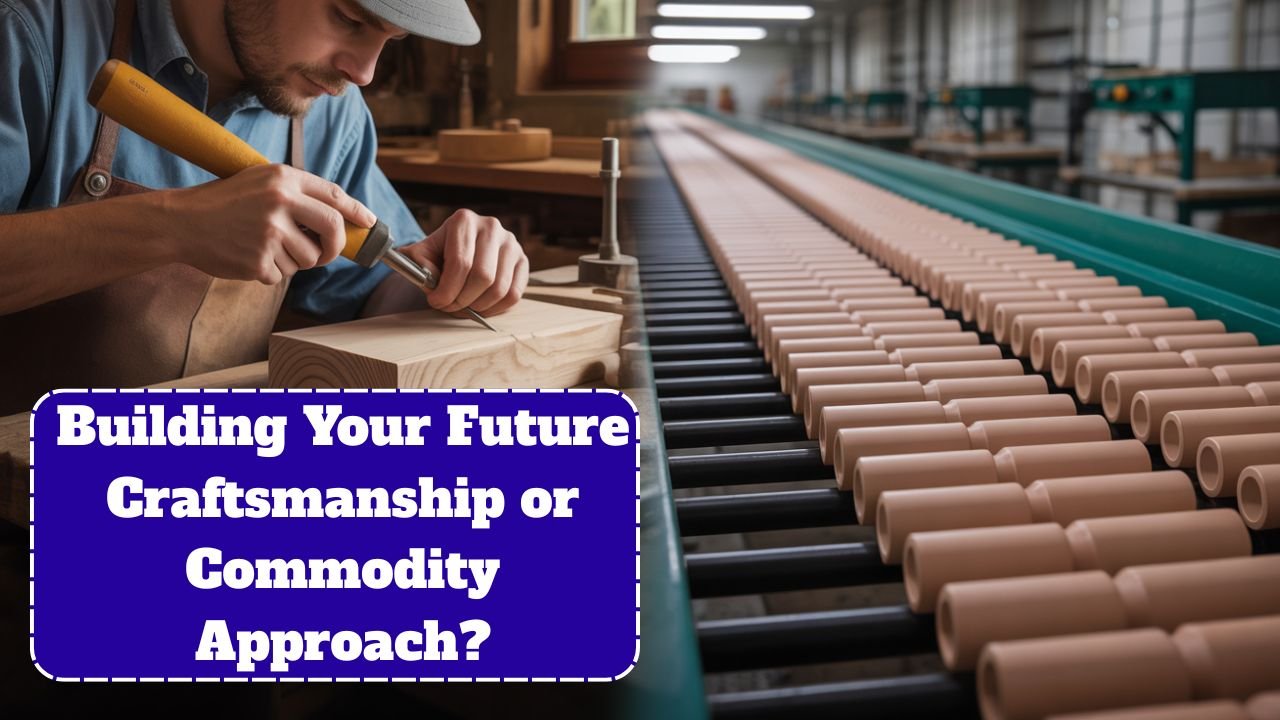Building Your Future: Today when artificial intelligence (AI) is designing our clothes and factories are churning out thousands of identical products every hour, an important question stands before us — What is the real value of what we buy?
At first glance, there doesn’t seem to be much difference between a factory-made mug and a handmade clay cup. But this difference—between handicraft and commodity, art and commerce—actually reflects a deep cultural and economic gap.
It’s not just about a product, it’s about identity, sustainability, human dignity and the future of tradition. These are values that today’s conscious consumer wants to embrace.
The growing handicraft market: is this change permanent?
The global handicraft market has exploded in recent years. It’s now worth hundreds of billions of dollars and is expected to double in the next decade.
But this boom isn’t just a fashion trend. It’s a rising wave of ethical consumerism — a trend where people are not just looking for cheap products, but also the ethics behind them, the hard work of the artisans and the impact on the environment.
Still, the truth is that the picture behind these numbers is still incomplete and a little harsh. Most handmade products do not fall under the purview of fair trade. Artisans are still not getting their fair wages, because the quantity of production is still given more importance than the quality.
Steps towards fair trade
Today, Fair trade products are easily available in every category in the market. But for this, consumers need to be aware.
Fair trade is not just a sticker, but a thought – a thought that respects human labor, creativity and cultural diversity. When we buy a handmade product, we support not just an object, but a tradition, a story and a family’s livelihood.
Revival of heritage: Where identity is based in craft
In the past, artisans were considered the backbone of any society. Their work was not only useful, but also culturally important.
For example – Zapotec rugs from Oaxaca, wax resist batik from Java, or hand-carved akuaba masks from Ghana – these were not mere decorative objects, but messages that lasted for generations.
But over the past hundred years, as industrialization took hold, handicrafts were gradually phased out of the market. Machine-made products promoted uniformity – a feature that was initially considered a mark of “modernity”.
Advertising and the Changing Equation of Consumer Psyche
Media and advertising further deepened this culture of uniformity. Now we are repeatedly told that wearing the same kind of bags, clothes or shoes is “style”. Branded bags have become a status symbol today. But in reality they are just walking advertising boards.
This mindset has proved disastrous for the artisans. Traditional crafts are slowly on the verge of extinction as the new generation has no other option for livelihood. They are forced to either migrate to cities or take up menial jobs.
Economic Compulsion and Loss of Legacy
No traditional art can be kept alive unless it provides bread, respect and opportunity to the artist. This is why the art passed down through generations is now confined to festivals and museums.
The work that many families have learned and taught for centuries is now closing down — simply because it is not considered ‘marketable’.
Slow Products, Slow Life: A Responsible Choice
‘Slow goods’ or slow products are not just a hobby — they are part of an alternative lifestyle. A life in which we shop thoughtfully, valuing the hard work and story behind the product.
When you buy a handmade item, you connect with a human being, not a machine. You respect their creativity, time, and soul.
A choice is yours
Finally, the question is to you and me — Do we want only cheap, monotonous goods, or a world that allows diversity, art, and human dignity?
We have to think that every purchase we make is a vote — either in favor of a machine, or in favor of an artisan.
The future of art and tradition depends on our decisions. It is not just the choice of a product, it is the choice of a whole thought.
Conclusion: Handicrafts are not just the past, but the future too
The next time you go to the market and choose a product, don’t just look at its color, size, or brand. Think — Will this item make someone’s life better? Will it save tradition or destroy it?
Because in the end, that will decide where we are headed —Towards a future where things are made from the heart, or a world where. Towards a world where everything comes from machines but has no soul.
